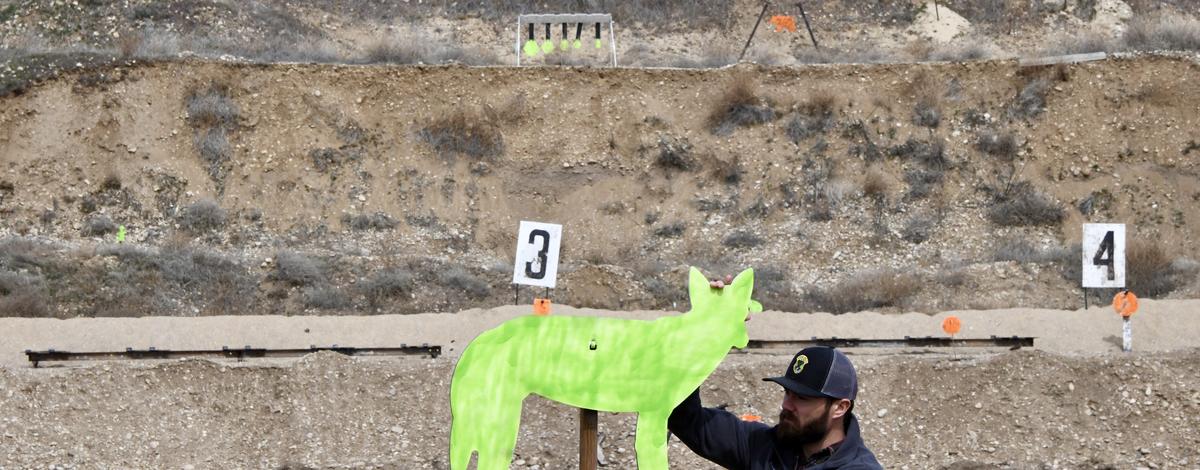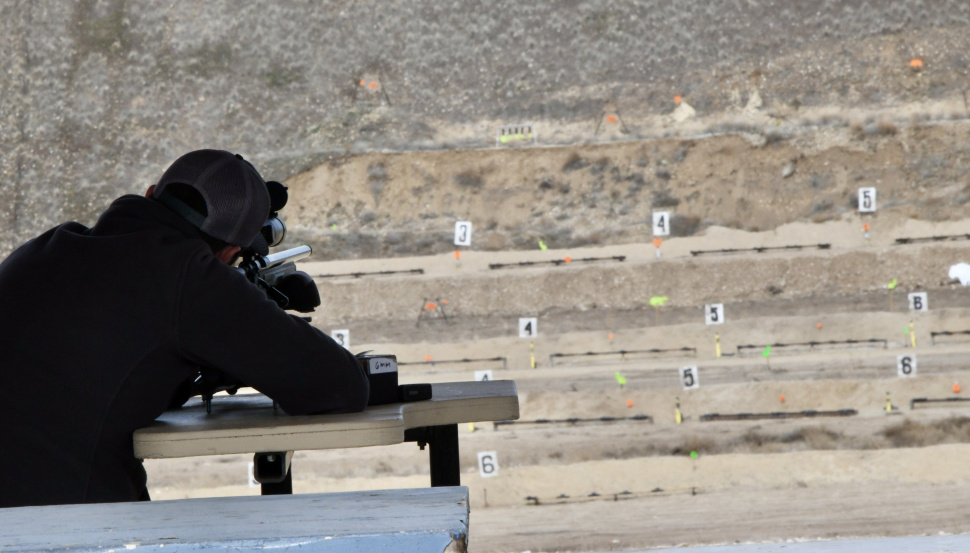Tired of using your favorite rifle and ammo for very expensive hole punchers and want to more fun at your next day at the shooting range? Idaho Fish and Game’s Blacks Creek Range southeast of Boise has expanded its Upper Silhouette Range with a variety of steel targets at various distances to help improve your aim and hear the “ring of steel” rather than putting a small hole in a paper target.
“We’ve enhanced this range by adding large and small animal silhouette targets to offer the shooter something more interesting and challenging, and Blacks Creek shooters are really enjoying it,” Fish and Game Shooting Range Liaison Derek Bibber said. “We encourage shooters to give it a try. Even if you’re a little humbled by your first attempt, you will learn a lot about yourself and your firearm’s capabilities, and probably improve your marksmanship.”
Test your skills and improve your aim
The range provides a safe, easily accessible, supervised place to shoot and features more than 50 steel targets ranging from 200 meters (about 218 yards) to about 550 yards, as well as covered bench rests for shooters. The range is open at least one day per week, and you can see the schedule online, as well as a map to the range and other information.
The Upper Silhouette Range's steel targets include round, square or rectangular shapes at uniform distances (250 yards, 300 yards, 350 yards, etc.). There are also targets that simulate game animals at random distances, and other targets that are just for fun, such as a coiled snake, a tiny Tyrannosaurus rex, or a pint-sized bigfoot.
“With the diversity of animal silhouettes, both life-size and scaled-down sizes, it’s a real-life shooting gallery at the Upper Silhouette Range,” Bibber said. “I’ve dubbed the Upper Silhouette Range the ‘BCR Zoo’ because of the variety of targets. Where else in Idaho will you find an armadillo, T-rex and sasquatch in one place?”
The Upper Silhouette Range serves several purposes to help shooters improve their skills and better understand their rifle, scope, ammunition and accessories.
“When you have a target the size of a dinner plate at 200 to 250 yards, and you have your firearm ‘zeroed’ at 100 yards, you can elevate your aiming point a little to compensate for the bullet drop and probably hit it,” Bibber said. “But when you start reaching out to 300 yards and beyond, bullet drop plays a huge factor, not to mention the effects of the wind, so you have to learn how to compensate for those in order to hit the target.”
Range finders that measure distances and rifle scopes with turrets that adjust for bullet drop, as well as apps that calculate the amount of bullet drop for different ammo, will only get you so far. It takes practice to use all those tools effectively, and the Upper Silhouette Range is a great place to figure out how to use them to improve your shooting.
Prepare for hunting season
It’s also a valuable opportunity for hunters to test their equipment and learn how challenging it can be to make consistent, repeated hits on targets at long distances, and figure out their true effective range in the field.
“The range is a great place to practice those longer shots at targets that resemble game animals,” Bibber said. “But it’s a little more complicated than whether you hit or miss. Not only do you have to hit the target, you have to essentially hit a “bullseye” in the vitals every time to ensure it would be a clean kill in the field.”
Bibber also reminds hunters that a shooting range is a fairly controlled environment with bench rests and stationary targets, so duplicating longer shots in the field during the excitement and rigors of a hunt are more challenging.
The intent is not to tell hunters how far they should or shouldn’t shoot at game, but to give them the opportunity to figure out how accurate and consistent they are at various distances and help them determine what’s practical and ethical when shooting at game.
“Think about it like this: you have essentially one shot on your hunt. If you wound or completely miss, you’re unlikely to get a follow-up chance,” he said. “Our steel won’t run off if you miss, so it’s a great place to learn how your ammunition and firearm perform at the slew of distances. It’s about as real as it gets.”
Don't forget to have fun
Aside from the practical side, the range also provides fun, challenging targets that react when you hit them, so there’s no peering into a spotting scope and looking for a tiny hole. The ring and swing of steel immediately lets you know you hit the target.
“Beware, it can be really addicting,” Bibber said. “Bring plenty of ammo because when you start hitting steel targets, you won’t want to stop, and when you miss, you’ll want to keep shooting until you hit it again,” he said. “Most of all, do not get frustrated. If you practice fundamentals of shooting and learn to use your equipment effectively, you can hit the sasquatch, or T-Rex, or any of the other dozens of targets out there.”



